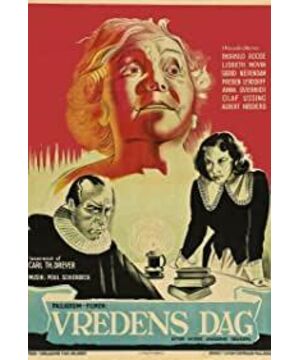There are many literary and cinematic works about the tragic fate of medieval witches. Precisely the Middle Ages was also the most prosperous period of Christianity, and the power of the church could almost decide everything. It is this kind of arbitrary spirit and power rule that allows the people to persecute others in the name of justice with peace of mind, which is similar to a certain period of time in a certain dynasty.
In the film, the old lady who kindly helped people to heal but was accused of being a witch was forced to admit that she was a witch under torture by the church. When the church asked her to confess other witches, she concealed the fact that the priest's dead mother-in-law was a witch. She did this in order to hope that the pastor would forgive herself and not burn her to death, because the pastor once knew that her mother-in-law was a witch but let her go. But high-ranking priests represent "righteousness" and represent God. The priest finally sent the old lady to the stake ruthlessly. Before being pushed into the flame, the old lady shouted desperately: I don't care whether I go to heaven or hell, I just want to live, I don't want to be burned, don't burn me! Don't burn me! The wailing of the old lady made the hair stand on end, and before she died, the old lady put a terrible curse on the priest and his family.
The old priest once let go of his mother-in-law, who was accused of being a witch, entirely because he hoped to show his rights to get a young and kind wife, that is, the heroine, his second wife, Annie. He got it, but it wasn't love, and Anne hated him, as well as the priest's mean mother. From the beginning to the end, the pastor's mother was a serious, aloof, mean bitch face, always making things difficult for her daughter-in-law.
Anne developed a relationship with the old pastor's son. The two of them were secretly in love with the pastor behind their backs, and they were very happy. In the end, Annie told the old pastor that she had committed adultery with his son, and the pastor was angry to death. This is what the wife has been looking forward to all the time. The husband she hates dies, and then she sticks to her love with her husband's son. At first, the husband's son was on her side, but at the priest's funeral, the priest's mother identified his wife as a witch, and the priest's son immediately turned his face and stood on the grandmother's side, leaving Annie who was fighting alone to face the Unwarranted charges. Anne confessed that she was a witch in front of the dead priest's coffin. Obviously, at this time, she just wanted to end her life as soon as possible, waiting for her to be burned at the stake.
Dreyer's film lighting and camera can be described as very particular. The shrill cry of the witch who was framed, the expression of fear, and the tortured passages, Dreyer used a lot of oblique shots and highlights to put the viewer in the perspective of God, watching the "witch" face the Holy Light and beg for mercy , which produced a great empathic response.
View more about Day of Wrath reviews







